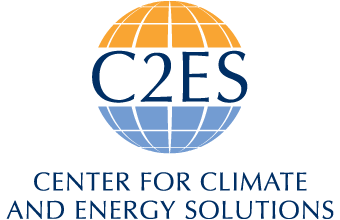The last time so many world leaders gathered on the issue of climate change was nearly five years ago in Copenhagen. The hard lesson of that fractious summit: No one moment, and no one agreement, can deliver “the” answer. We need to advance step by step, on multiple fronts, from the local to the global. And it will take time.
This reality is an important backdrop for the United Nations Climate Summit being convened in New York next week by U.N. Secretary General Ban Ki-moon.
More than 120 heads of state, including President Obama, are expected, and many will come prepared to announce concrete steps to curb greenhouse gas emissions. Many businesses and nonprofits, some partnering with governments, will also announce new initiatives.
These tangible outcomes will represent important progress in and of themselves. But the larger value of the summit is in focusing leaders on the profound challenges we face, raising consciousness across societies, and building momentum – in particular, toward the new global climate agreement due late next year in Paris.
Unlike Copenhagen, which culminated years of formal negotiations, the New York summit is largely a political way station on the road to Paris. In their few minutes at the podium, leaders will emphasize their resolve for stronger steps at home, and for a stronger global agreement. But there will be no negotiated outcome or joint communique. The only formal output will be the secretary general’s summary.
Most leaders are very unlikely to announce their countries’ “intended nationally determined contributions” to the Paris agreement. Under the formal negotiating schedule, these commitments to reduce emissions post-2020 aren’t due to be submitted until early next year. But an important signal in New York will be for leaders of the major economies to “commit to submit.”
Even without big numbers on the table, there are ways the summit can help move the ball forward by:
- Getting leaders focused. The summit forces governments at the highest levels to closely consider what’s at stake, and what they’re prepared to say and do, with the whole world watching.
- Mobilizing finance. The new Green Climate Fund, which will help developing countries curb emissions and cope with climate change, is now established and awaiting contributions. It’s a fair bet that at least some leaders will come to New York prepared to offer them. And some leading financial institutions will announce ways they’ll help mobilize private capital. Progress on finance is critical to achieving a good outcome in Paris.
- Mobilizing civil society. Leaders speak for governments. But the summit is also a powerful platform for everyone else – from the crowds joining Sunday’s People’s Climate March to the major companies announcing initiatives – to press for or commit to action. In just one example, C2ES will join more than 300 companies and organizations signing on to a statement urging governments to use carbon pricing to drive down emissions.
- Broadening the case for action. The scientific case is unequivocal and growing ever more urgent. The summit is an opportunity to make the economic case for stronger climate action. We need to highlight the very real costs of inaction – and the very real opportunities to be found in a low-carbon economy, the focus of a report this week from the Global Commission on the Economy and Climate.
In the broadest sense, the aim in both New York and Paris is building confidence, which in turn builds political will. Knowing that others are doing their fair share makes it easier for everyone to do more. It’s an accumulative process – it strengthens over time.
What we need from the New York summit is a clear statement of intent from leaders. We need to know that they’re determined to come forward next year with strong national contributions. That’s how the summit can help set the stage for a Paris agreement that has all the major players on board, moves us closer to a 2-degree pathway, and works to strengthen ambition over time.
Jennifer Huang contributed to this blog post.
